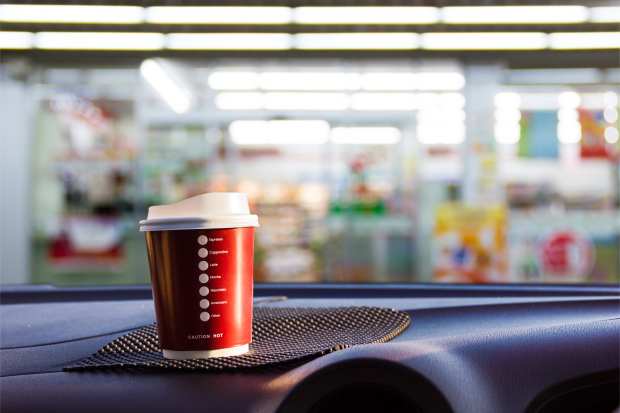How Donuts, Delivery And Sound Could Change C-Store Retail

Convenience stores are not only a staple of consumer life — they also operate under often bad reputations, as places where the coffee is supposed to be stale and the food unhealthy. But things are changing fast in this corner of retail.
LISNR is one company involved with gas station, convenience store and general retail transactions. What LISNR brings to the table is using sound waves — specifically, ultrasonic ones — for transactions. The company sells pay-by-sound technology that requires no point-of-sale (POS) upgrades. That can reduce the costs for gas station operators looking to get as much as possible from the coming EMV liability shift for gas stations, and offer a chance for consumers to receive, for instance, highly precise retail promotions transmitted from speakers already at gas pumps to their mobile phones while pumping gas.
Donuts and Coffee
“Let’s say I drink iced coffee every morning, but don’t buy donuts,” Chris Triconi, director of petro, convenience stores, and fuel retail for LISNR, told PYMNTS. “Why not send me a promotion for a donut?” The LISNR tech, in turn, can integrate with consumers’ mobile wallets. “We can leverage existing hardware,” he said.
A lot can happen in the year or so until that EMV shift, especially in the gas station and convenience store space — where, as PYMNTS research has demonstrated, younger consumers, such as millennials, are starting to drive innovation and disruption. Just more than one year from now, when that EMV liability shift has kicked in, it’s doubtful that conversations will be about that as much as better consumer engagement in that part of the retail world, Triconi noted.
Delivery Push
That’s all when it comes to innovation and convenience stores.
Delivery could be the force that drives convenience stores into their next phase. In another PYMNTS interview, Don Frieden, CEO of mobile commerce and digital marketing firm P97, said that offering pumpside delivery of C-store products — pretty much the general model used by carhops — could help those stores grow and evolve to meet the needs of modern, digitally minded consumers.
The interview came amid significant shifts involving convenience stores. A general trend of declining fuel prices is not producing the typical growth in C-store gas sales, Frieden said. Better fuel efficiency is also playing a role in this — he said the typical owner of a Ford F-150 truck, among the best-selling vehicles in history, now makes nine fewer gas runs each year than the owner of that same truck about a decade ago. That means every remaining trip to a gas station C-store has more importance from the standpoint of the merchant.
“Every trip has to count,” he said.
That’s where the updated carhop idea comes in. During those fueling runs, according to Frieden, consumers typically have three to four minutes of relatively idle time — time in which trained C-store workers could deliver to those vehicles at the pump products that were pre-ordered and already paid for by those consumers (perhaps via their connected vehicle eCommerce technology).
“You have to create great experiences for customers,” he said, adding that providing a friction-free, relevant and even fun experience matters, particularly to younger consumers like millennials. Not to mention, those experiences go beyond pumpside deliveries.
For instance, fresh, made-to-order food is vital for a C-store looking to reach those consumers, and otherwise thrive in this digital era. Hot dogs and chips just don’t do the job anymore, especially with more grocery stores and restaurants offering curbside delivery and mobile-order ahead, and a host of online food delivery services standing ready to feed those hungry shoppers, commuters and other drivers.
You can expect more change to come — big changes — in this part of the retail world.
